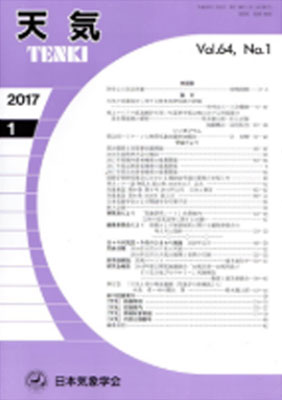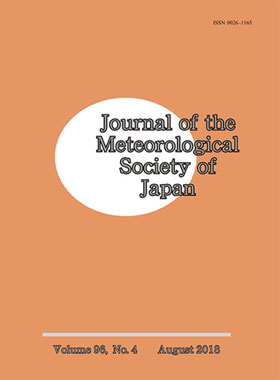-
17A-001
Ito and Ichikawa,:
Warm ocean accelerating tropical cyclone Hagibis (2019) through interaction with a mid-latitude westerly jet, SOLA, VOL.17A, doi:10.2151/sola.17A-001
-
17A-002
Kawase et al., :
Enhancement of extremely heavy precipitation induced by Typhoon Hagibis (2019) due to historical warming, SOLA, 2021, VOL.17A,doi:10.2151/sola.17A-002
-
17A-003
Kanada et al.,:
Future Changes of a Slow-moving Intense Typhoon with Global Warming: A Case Study using a regional 1-km-mesh atmosphere–ocean coupled model, SOLA, 2021, VOL.17A,doi:10.2151/sola.17A-003
-
17A-004
Iizuka et al.,:
Influence of Warm SST in the Oyashio Region on Rainfall Distribution of Typhoon Hagibis (2019), SOLA, 2021, VOL.17A,doi:10.2151/sola.17A-004
-
17A-005
Wada and Chan,:
Increasing TCHP in the Western North Pacific and Its Influence on the Intensity of FAXAI and HAGIBIS in 2019, SOLA, 2021, VOL.17A,doi:10.2151/sola.17A-005
-
17A-006
Nakashita and Enomoto,:
Factors for an Abrupt Increase in Track Forecast Error of Typhoon Hagibis (2019), SOLA, 2021, VOL.17A,doi:10.2151/sola.17A-006
-
17A-007
Kanada et al.,:
Projection of Future Enhancement of Heavy Rainfalls Associated with Typhoon Hagibis (2019) Using a Regional 1-km-mesh Atmosphere-Ocean Coupled Model, SOLA, 2021, VOL.17A,doi:10.2151/sola.17A-007
-
17A-008
Yamada and Kuribayashi.,:
Topographic Effect on Heavy Rainfall Caused by Typhoon Hagibis (2019) in Nagano, Japan, SOLA, 2021, VOL.17A,doi:10.2151/sola.17A-008



 RSS feed of SOLA latest issue
RSS feed of SOLA latest issue
